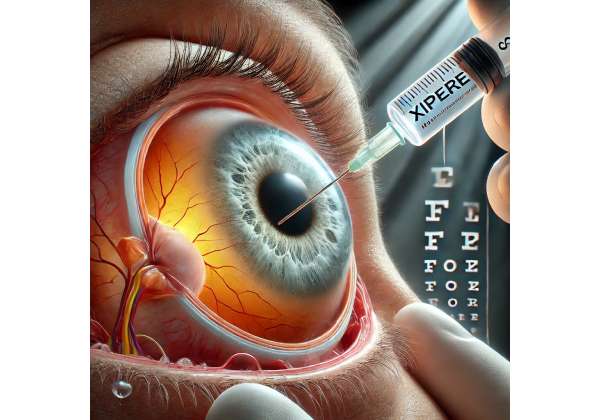Datura: Health Benefits, Properties, Toxicity, and Modern Applications
Datura is one of the most enigmatic and controversial herbs known to humanity. Belonging to the Solanaceae family, this powerful plant has been both revered and feared for centuries. Known by various names such as Jimson weed, thorn-apple, and devil’s trumpet, Datura is recognized for its striking, trumpet-shaped flowers and spiny seed pods. Its rich history in spiritual rituals,...
Date Palm: Benefits, Uses, Properties, and Comprehensive Research
The Date Palm, scientifically known as Phoenix dactylifera, is a majestic tree revered for its luscious fruits, rich nutritional profile, and deep historical and cultural significance. Often found swaying in the arid landscapes of the Middle East and North Africa, this iconic palm has nourished civilizations for millennia. Beyond its delicious dates, the Date Palm offers a wide array...
Daphniphyllum: Benefits, Therapeutic Applications, Uses, and Safety
Daphniphyllum is a remarkable genus of evergreen shrubs and small trees that captivates with its unique foliage, intriguing chemical profile, and a history steeped in both traditional herbal practices and modern scientific inquiry. Native predominantly to East Asia, Daphniphyllum species have long been appreciated not only for their ornamental beauty in gardens and landscapes but also for their potential...
Daphne-berry: Benefits, Uses, and Comprehensive Research
Daphne-berry is an intriguing herbal innovation that marries the unique characteristics of the Daphne genus with the nutritional prowess of select berry extracts. This hybrid botanical product is renowned for its distinctive aromatic profile, striking color, and a potent blend of bioactive compounds. Traditionally, plants from the Daphne family have been celebrated for their ornamental beauty and complex phytochemistry,...
Daphne: Natural Benefits, Practical Applications, and Research
Daphne is a fascinating genus of shrubs, celebrated for its enchanting beauty and potent bioactive properties. Belonging to the Thymelaeaceae family, Daphne species have long been admired for their delicate, fragrant blossoms and striking foliage. However, beneath this alluring exterior lies a complex profile of phytochemicals that offer both potential therapeutic benefits and significant safety considerations. Traditionally used in...
Dandelion: Benefits, Properties, Uses, and Safety
Dandelion, often recognized by its bright yellow blooms and ubiquitous presence in lawns and meadows, is far more than a weed. Celebrated for its extensive medicinal properties, dandelion (Taraxacum officinale) has been used for centuries in traditional herbal medicine, culinary applications, and modern natural wellness regimens. This unassuming herb is a powerhouse of nutrients and bioactive compounds, offering benefits...
Damiana: Health Benefits, Properties, and Modern Applications
Damiana is a captivating herb known for its long-standing reputation as a natural remedy and aphrodisiac. Often referred to by its scientific name, Turnera diffusa, Damiana has been cherished in traditional medicine for centuries. Native to regions such as Mexico, Central America, and parts of the southwestern United States, this versatile herb has become popular worldwide for its unique...
Damask Rose: Benefits, Uses, Properties, and In-Depth Research
The Damask Rose, scientifically known as Rosa × damascena, has enchanted cultures across the globe with its mesmerizing fragrance and timeless beauty. Revered not only for its ornamental charm but also for its extensive therapeutic properties, the Damask Rose has earned a distinguished place in traditional medicine, perfumery, and modern wellness. Known as the “Queen of Roses,” this exquisite...
Dalak-damak Tahun: Comprehensive Guide to Benefits, Uses, Safety, and Phytochemical Insights
Damak-damak Tahun is a distinctive herb revered in traditional medicine and cultural practices across Southeast Asia. Known for its subtle aroma, intricate leaf patterns, and potent bioactive compounds, this herb has been cherished by indigenous communities for centuries. Its unique properties have been passed down through generations and are now drawing the attention of modern researchers who are exploring...
Dalbergia: Ultimate Resource for Benefits, Safety, and Modern Applications
Dalbergia is a remarkable genus of tropical trees and shrubs celebrated for its exquisite, durable hardwoods and a rich history in traditional medicine and craftsmanship. Often referred to as the source of prized rosewood, Dalbergia species have long been esteemed not only for their beauty and economic value but also for their potential therapeutic properties. With a legacy spanning...
Daisy: Benefits, Uses, and In-Depth Research
Daisies have charmed gardeners, herbal enthusiasts, and nature lovers for centuries with their cheerful blooms and versatile qualities. Beyond their simple beauty lies a world of medicinal and therapeutic potential, making them a popular subject in both traditional remedies and modern herbal research. This article provides an in-depth exploration of daisy’s botanical characteristics, historical significance, active compounds, diverse benefits,...
Dainty White: Insightful Overview of Uses, Benefits, and Scientific Studies
Dainty White is a captivating herb known for its delicate appearance and subtle charm. Revered by gardeners, herbal enthusiasts, and natural health advocates alike, this herb brings together aesthetic appeal with an intriguing history and a promising spectrum of bioactive properties. With its pristine white blossoms and gentle aroma, Dainty White not only graces gardens with elegance but also...
Dahlia: Exploring Benefits, Medicinal Applications, and Research
Dahlias, particularly the vibrant Dahlia pinnata, captivate the eye with their intricate blooms and diverse color palettes. Celebrated worldwide for their ornamental charm, these perennial plants not only grace gardens and floral arrangements but also carry rich historical and cultural significance. Originating from the highlands of Mexico, dahlias have journeyed across continents to become symbols of elegance, resilience, and...
Daffodil: Benefits, Properties, Uses, and Safety
Daffodils are renowned for their vibrant, trumpet-shaped blooms and unmistakable charm that heralds the arrival of spring. Beyond their ornamental appeal, these striking flowers have a storied past and a wealth of characteristics that intrigue botanists, historians, and even modern researchers. While daffodils are primarily appreciated for their beauty, they also possess a range of intriguing properties that have...
Dabai: Nutritional Benefits, Uses, and Research Insights
Dabai is a unique and underappreciated herb that has garnered increasing attention for its remarkable nutritional profile and traditional applications. Known for its distinct aroma and robust flavor, dabai has been used in various cultures both as a culinary delight and a natural remedy. This article delves deep into the world of dabai, exploring its botanical attributes, historical relevance,...
Zuretinol Acetate Investigational, Modern Oral Therapy for Leber Congenital Amaurosis and Retinitis Pigmentosa
In the rapidly evolving world of ophthalmic therapeutics, innovation is the cornerstone of progress. Today, investigational therapies are redefining treatment paradigms for inherited retinal diseases, and Zuretinol Acetate is at the forefront of this revolution. As a modern oral therapy, Zuretinol Acetate is designed to address the complex challenges of Leber Congenital Amaurosis and Retinitis Pigmentosa—two debilitating conditions that...
Zirgan’s Efficacy in Treating Herpetic Keratitis Managing Dendritic Ulcers with Cutting-Edge Ganciclovir Therapy
Advances in ophthalmic therapeutics continue to redefine the way we approach ocular diseases, and Zirgan stands out as a shining example of this innovation. This modern ganciclovir therapy is designed to address the challenges of herpetic keratitis, particularly the management of dendritic ulcers, by delivering antiviral action directly to the site of infection. Zirgan leverages a cutting-edge formulation of...
Zerviate for Allergic Conjunctivitis Relieving Symptoms with Modern Cetirizine Ophthalmic Solution
Allergic conjunctivitis has long been managed with a variety of treatments, yet modern advances in ocular pharmacology have introduced therapies that not only relieve symptoms quickly but also offer long-term benefits with minimal side effects. Zerviate stands out as one of these innovative solutions. Developed as a modern cetirizine ophthalmic solution, Zerviate harnesses the power of a well-known antihistamine...
YUTIQ for Non-Infectious Uveitis Preserving Vision with Sustained-Release Corticosteroids
In today’s rapidly evolving landscape of ophthalmic treatments, innovations in drug delivery are transforming patient care and outcomes. YUTIQ represents a breakthrough in the management of non-infectious uveitis, offering a sustained-release corticosteroid solution that preserves vision while reducing the frequency of flare-ups. This advanced therapy is designed to deliver a controlled dose of corticosteroid directly within the eye, ensuring...
Xipere Treating Macular Edema from Uveitis with Advanced Suprachoroidal Corticosteroid Injection
In the realm of modern ophthalmic therapeutics, innovation is at the heart of transforming patient care. Xipere represents one such breakthrough—a cutting-edge suprachoroidal corticosteroid injection designed specifically to address macular edema resulting from uveitis. With a focus on targeted drug delivery and enhanced safety profiles, Xipere brings a new dimension to ocular treatment by ensuring that the corticosteroid is...
Xiidra for Dry Eye Disease A Lifitegrast-Based, Cutting-Edge Approach to Reducing Inflammation and Improving Tear Production
In today’s fast-evolving world of ocular therapeutics, innovations that target the underlying mechanisms of eye discomfort are not only welcome—they are transformative. Xiidra stands at the forefront of these breakthroughs, offering a lifitegrast-based solution that has redefined the management of dry eye disease. With its unique formulation designed to reduce inflammation and enhance tear production, Xiidra brings a fresh...
Vyzuity for Fungal Keratitis Treating Corneal Infections with Advanced Voriconazole Ophthalmic Solution
Experience the innovation of Vyzuity—an advanced voriconazole ophthalmic solution designed to revolutionize the treatment of fungal keratitis. This state-of-the-art therapy leverages cutting-edge formulation technology to deliver voriconazole directly to the corneal tissue, providing targeted treatment that effectively combats fungal pathogens while minimizing discomfort and side effects. With a focus on precision and enhanced bioavailability, Vyzuity offers a modern solution...
ViaLuxe Laser System Precision and Power in Non-Invasive Glaucoma Treatment
Experience the innovation of the ViaLuxe Laser System—a breakthrough in non-invasive ocular therapy that delivers unmatched precision and power for glaucoma treatment. This cutting-edge technology redefines laser therapy by offering targeted treatment with minimal discomfort, allowing patients to benefit from a procedure that is both effective and gentle. With its state-of-the-art laser delivery mechanism, the ViaLuxe Laser System optimizes...
Verkazia for Vernal Keratoconjunctivitis Alleviating Severe Inflammation with Modern Cyclosporine Emulsion
In the ever-evolving landscape of ocular therapies, Verkazia stands out as a groundbreaking treatment designed to address severe inflammation with modern cyclosporine emulsion. With innovative formulation and delivery methods, Verkazia offers renewed hope to those who have long struggled with the discomfort and visual impairment associated with vernal keratoconjunctivitis. This modern cyclosporine emulsion is formulated to provide targeted anti-inflammatory...



























